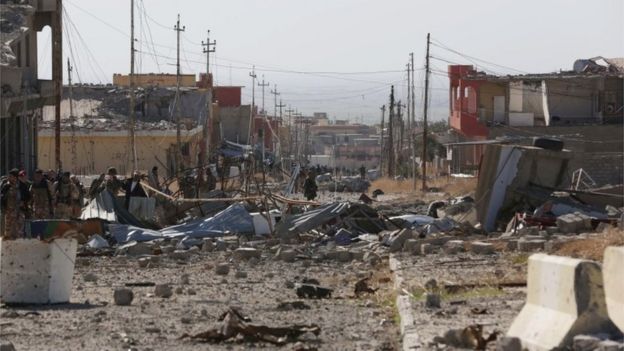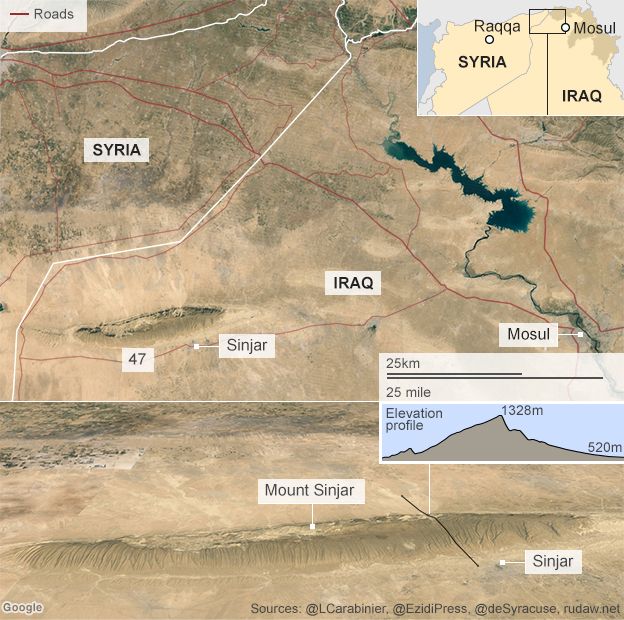Islamic State on the Retreat
"By controlling Highway 47, which is used by [ISIL] to transport weapons, fighters, illicit oil and other commodities that fund their operations, the coalition intends to increase pressure ... and isolate their components from each other."
"[The operation is meant to establish] a significant buffer zone to protect the city and its inhabitants from incoming artillery."
Kurdish Regional Security Council
"We promised, we have liberated Sinjar. Sinjar is very important because it's become a symbol of injustice against the Kurdish people."
Massoud Barzani, president, Kurdish autonomous region
"No one was fighting back. They placed some IEDs [improvised explosive devices] and had some snipers in position, but there were no clashes."
"I can't say the operation is complete because there are still threats remaining inside Sinjar."
Peshmera Maj. Ghazi Ali
 |
|
|
Kurdish fighters on both sides of the border linked forces, despite an aura of grudging competition that has arisen between the Peshmerga and the YPG over the YPG's successful rescue of hundreds of Yazidi families stranded on Mount Sinjar in 2014, after the ISIL capture of Sinjar town. The Iraqi Kurds were insisting that this is their territory, though they had been incapable of responding to the Yazidi plight. They wanted to see the YPG retreat completely back to Syria.
Operation Free Sinjar brought them back together in a common fight to regain territory on both sides of the border, taken by Islamic State for their caliphate. Nine ISIL tactical units had been hit, and nine staging areas destroying 27 fighting positions by 24 coalition airstrikes paving the way for the Kurdish militias to make their move. Closing in on Sinjar from three sides, 7,500 Peshmerga fighters took the town and the highway.
"Sinjar is not important for [ISIL] as an area What is important is this road", explained Hisham al-Hashimi, an Iraqi expert in regional Islamist extremist groups. But the Kurdish forces, encountering little resistance raised a Kurdish flag in the centre of Sinjar, declaring it liberated. The lack of resistance led to the belief that ISIL fighters had pulled back to await an opportunity to strike back with force.
And in Syria a coalition of Arab, Christian and Kurdish rebel factions [Democratic Forces of Syria] took another town from ISIL, in northern Hassakeh province. As in Iraq, coalition airstrikes had hit ISIL militants beforehand leaving others to flee, and as they did, they left their weapons and ammunition behind. The very reverse of what had occurred when ISIL forces marched on Mosul and Iraqi military fled in terror, leaving all the advanced U.S.-supplied weaponry for Islamic State to make use of.
As the coalition fighters reached the outskirts of Hol in Syria, the Islamic State fighters burned houses as they fled. Other ISIL fighters took civilians as shields as they left the area.

Labels: Conflict, Iraq, Islamic State, Kurds, Peshmerga, Syria

<< Home